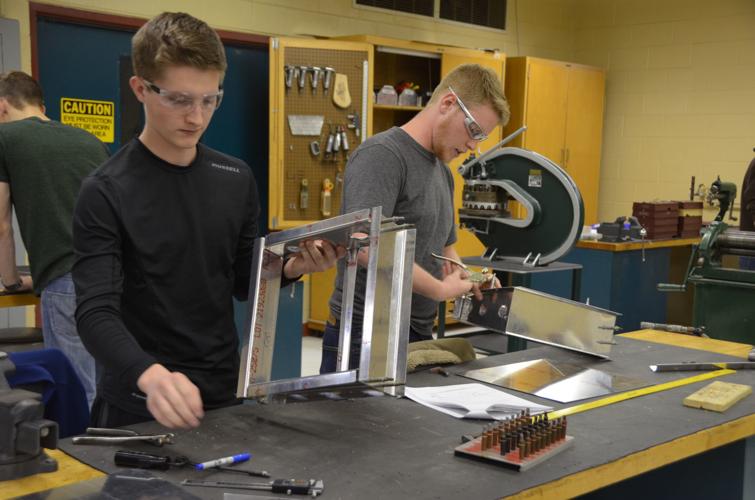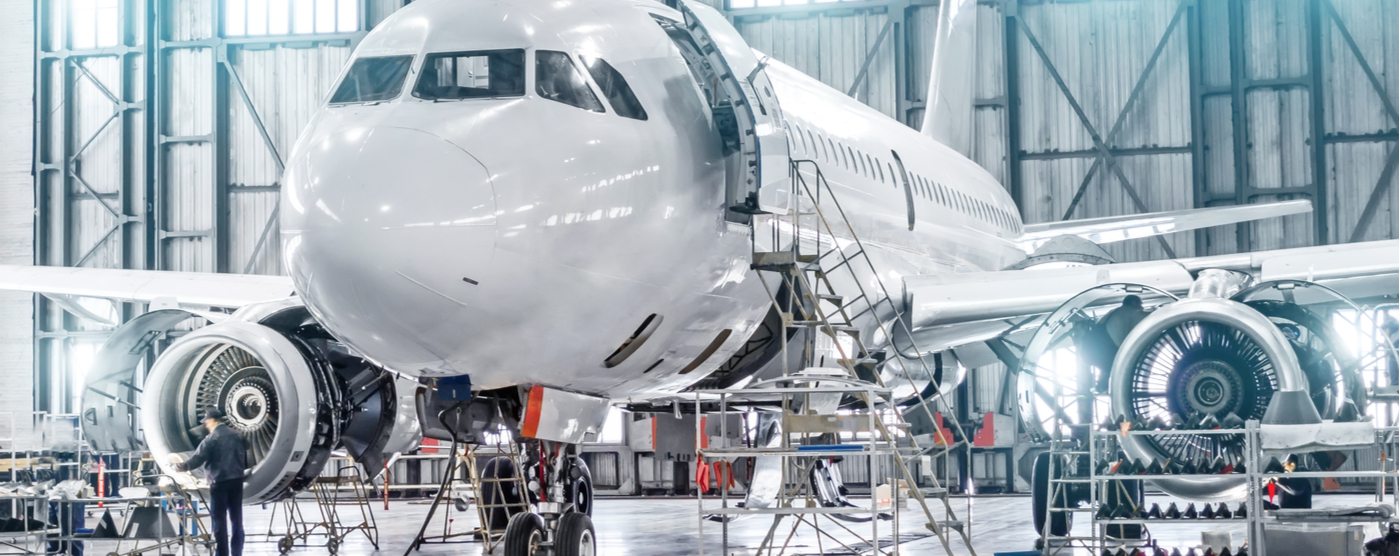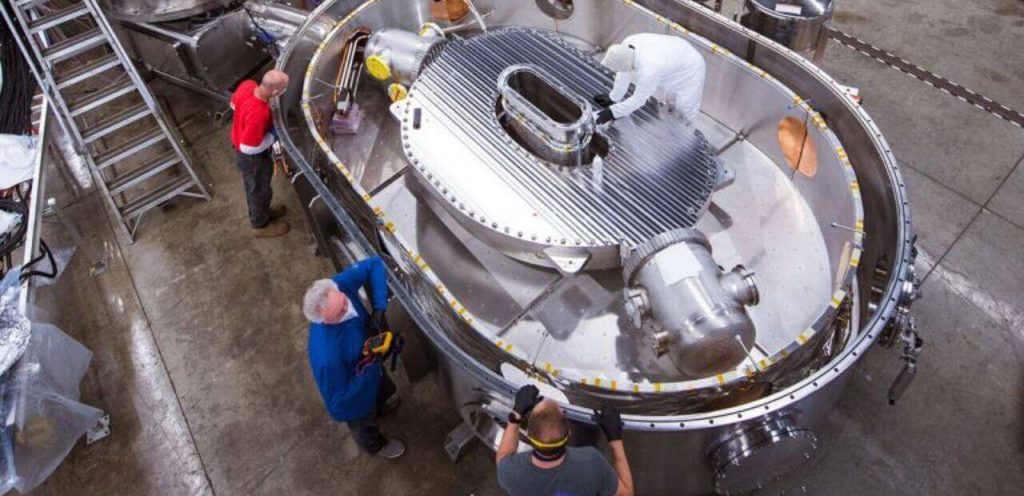A Diploma in Aeronautical Engineering in Bangladesh is a technical program offered by several polytechnical institutions. This diploma serves as a foundation for careers in the aviation industry.
Embarking on a Diploma in Aeronautical Engineering in Bangladesh equips students with the essentials of aircraft design, maintenance, and operation. The program typically spans over four years, with each year consisting of two semesters that combine theoretical studies with practical workshops.
Candidates gain insights into aerodynamics, avionics, air traffic control, and airport management, among other focal areas. Graduates of this diploma can pursue immediate employment as technicians or assistant engineers in the robust aviation sector. They can also opt to further their studies in a bachelor’s degree program for deeper technical knowledge and enhanced career prospects. The demand for skilled aeronautical professionals in Bangladesh underscores the value of this educational path.
The Ascent Of Aviation: Bangladesh’s Role
Bangladesh’s Aviation History
In the heart of South Asia, Bangladesh’s journey in the skies began post-independence. Taking flight in the early 1970s, the country nurtured its aviation sector with passion and purpose. Historical milestones paint a tale of progress and patriotism.- Establishment of Biman Bangladesh Airlines, the nation’s flag carrier, in 1972.
- Initiation of aerospace engineering education to empower local talent.
- Growth in domestic and international air routes, enhancing connectivity.
Current Aerospace Developments
The present landscape teems with innovation. Aerospace ventures, from education to industry, thrive amid robust growth. Bangladesh now eyes global market integration.| Aspect | Development |
|---|---|
| Education | Diploma programs in aeronautical engineering launch. |
| Infrastructure | New airports and upgrades to existing ones. |
| Industry | Collaborations with international aerospace firms. |

Credit: www.wvnews.com
Aeronautical Engineering: An Introduction
What Is Aeronautical Engineering?
Aeronautical Engineering is about designing and building aircraft. It involves jets, helicopters, and even spacecraft. The journey starts with a dream. The sky becomes home.- Designing planes
- Understanding materials
- Mastering systems that make flight possible
The Science Behind Flight
Why do planes stay in the air? It’s all about science. Gravity, lift, drag, and thrust work together. Physics and mathematics help engineers. They build machines that conquer the skies.| Force | Role in Flight |
|---|---|
| Gravity | Pulls down |
| Lift | Pulls up |
| Drag | Slows down |
| Thrust | Pushes forward |
Diploma In Aeronautical Engineering: The Launchpad
Embark on an exciting journey with a Diploma in Aeronautical Engineering in Bangladesh. This specialized program is your ticket to the thrilling aerospace industry. It equips you with crucial technical skills. The diploma serves as a solid foundation for a career amongst the stars.
Diploma Vs. Degree
Understanding the difference between a diploma and a degree is vital. A degree often involves four years of study at a university. A diploma, on the other hand, takes two to three years at a polytechnic institute or college.
- Diploma programs focus on technical skills.
- Degree courses provide a broader education.
Those with time or resource constraints often opt for a diploma. It acts as a fast-track entry into the aeronautical sector. Degree seekers generally invest more time in theoretical learning.
Course Structure And Content
The Diploma in Aeronautical Engineering lays out a practical curriculum. This includes essential aeronautics principles. A hands-on approach ensures students gain real-world experience. Below is a snapshot of the course structure:
| Year | Focus | Key Subjects |
|---|---|---|
| 1 | Fundamentals | Mathematics, Physics, Workshop Technology |
| 2 | Intermediate Studies | Aerodynamics, Aircraft Systems, Material Science |
| 3 | Advanced Applications | Propulsion, Avionics, Aircraft Maintenance |
Upon completion, you unlock new career pathways. You can work in aircraft design, maintenance, or manufacturing sectors. The diploma illustrates a robust framework readying tomorrow’s aeronautical professionals.

Credit: www.vaughn.edu
Institutes Offering Aeronautical Diplomas In Bangladesh
Leading Institutions And Colleges
Several top-notch institutes in Bangladesh shine when it comes to imparting aeronautical knowledge. These institutions, recognised for their excellence, include:- Military Institute of Science and Technology (MIST)
- Bangladesh University of Engineering and Technology (BUET)
- Rajshahi University of Engineering & Technology (RUET)
Infrastructure And Facilities
The success of a diploma program often hinges on the resources available to students. These institutes offer top-grade infrastructure to support the learning journey:| Institute | Labs | Workshops | Simulation Tools |
|---|---|---|---|
| MIST | Aerodynamics | Aircraft Structures | Flight Dynamics |
| BUET | Propulsion | Avionics | CAD/CAM |
| RUET | Materials Testing | Maintenance | Control Systems |
Eligibility Criteria For Aspiring Students
Academic Qualifications
Prospective students must satisfy specific academic criteria to enroll in a Diploma in Aeronautical Engineering:- Completion of SSC (Secondary School Certificate).
- Grade point average of at least 3.0.
- Passing scores in science subjects, especially Physics and Mathematics.
Physical And Medical Standards
Physical and medical fitness are essential for students aiming for a career in aviation:- No color blindness or night blindness.
- Good hearing and no speech impediments.
- Be medically fit as per aviation standards.
Curriculum And Specializations
Core Subjects Covered
The foundational bricks of the diploma focus on key areas to build expertise. The coursework encompasses:- Aircraft Structures: Anatomy of aircraft and material use
- Aerodynamics: Airflow concepts around the planes
- Aircraft Propulsion: Engine types and operation
- Avionics: Electronic systems within the aircraft
- Flight Mechanics: Forces acting on a plane during flight
- Maintenance Practices: Aircraft upkeep protocols
- Workshop Technology: Crafting of aircraft components
Electives And Areas Of Focus
Elective modules allow students to specialize in sectors they are passionate about. Options include:| Elective | Focus Area |
|---|---|
| Aircraft Systems Design | Creating efficient aircraft systems |
| Air Navigation | Guiding aircraft through airspace |
| Air Traffic Control | Managing aircraft on the ground and in the sky |
| Aircraft Material and Processes | Studying materials used in aviation |
| Safety Management | Minimizing risks in aviation operations |
Practical Training And Workshops
Hands-on Experience
Leveraging practical sessions, the diploma course ensures that students get their hands dirty—quite literally. The curriculum includes:- Extensive laboratory work to complement classroom lectures
- Flight simulation exercises using advanced software
- Aircraft building projects from the ground up
Industry Collaborations
Strong ties with aviation leaders enrich the diploma program. These collaborations offer:- Expert-led workshops that provide insights into contemporary aviation trends
- Internship opportunities at aerospace companies and airports
- Visiting faculty from industry giants
Faculty And Mentors: Guiding The Aviators Of Tomorrow
Expert Instructors
Expert instructors are the backbone of any educational program. In Bangladesh, the aeronautical engineering diploma is supported by faculty who are not only academically qualified, but also have real-world experience in the aviation industry. This blend of theoretical knowledge and practical expertise ensures that students receive a well-rounded education. Here are some key highlights:- Professors with advanced degrees in aeronautical engineering and related fields
- Instructors holding significant field experience working with aerospace technology
- Faculty members engaged in cutting-edge research exercises
- Classes infused with the latest industry trends and technology
Mentorship Programs
Mentorship is crucial in navigating the complexities of aviation science. The Diploma in Aeronautical Engineering in Bangladesh includes structured mentorship programs designed to foster student growth. Each mentorship aspect aims to:- Develop a network between students and aviation professionals
- Offer one-on-one guidance to address individual aspirations
- Provide insights into the aviation industry’s realities
- Prepare students for their careers with hands-on project guidance
Certifications And Licensing
Local And International Recognition
A Diploma in Aeronautical Engineering from Bangladesh holds significant value. Accreditations from local boards align with international standards. This validates the quality of education received.- CAAB – Civil Aviation Authority of Bangladesh
- EASA – European Union Aviation Safety Agency
Path To Becoming A Licensed Engineer
Earning a diploma is the first step. Next, aspiring engineers must obtain a professional license.- Complete the Diploma program successfully.
- Accumulate practical experience through internships.
- Pass a licensing exam conducted by the CAAB.
| Step | Action | Outcome |
|---|---|---|
| 1 | Education | Diploma Certification |
| 2 | Experience | Hands-On Skills |
| 3 | Examination | Professional License |
Career Opportunities Post-diploma
Job Market For Diploma Holders
The aeronautical sector in Bangladesh is fast-growing. With a Diploma in Aeronautical Engineering, job opportunities abound. Graduates find slots in public and private sectors. They contribute to airlines, air forces, and aerospace companies. Let’s explore the job market through key employment sectors for diploma holders:- Airlines: Both domestic and international airlines seek skilled technicians.
- Defense Services: The Bangladeshi Air Force and defense manufacturers offer roles requiring aeronautical expertise.
- Maintenance & Repair: Maintenance firms need diploma holders to service aircraft.
- Aerospace Companies: These firms design and build aircraft, demanding specialized skills.
- Government Agencies: Regulatory bodies hire for roles linked to safety and standards.
Roles And Responsibilities
Graduates with a Diploma in Aeronautical Engineering hold pivotal roles. They ensure the smooth operation and safety of aircraft. Key roles include:- Aircraft Technician: Manage repairs and maintenance of aircraft components.
- Quality Control Engineer: Oversee manufacturing processes and ensure quality standards.
- Flight Mechanic: Inspect and maintain the mechanical systems of aircraft.
- Aerospace Designer: Use CAD software to design aeronautical products.
Continuing Education: Taking Flight To Higher Degrees
Advancing To A Bachelor’s Degree
After a diploma, a bachelor’s takes flight. This degree broadens skills. It invites more chances. Students learn design, analysis, and systems. They become ready for top industry roles.- More depth in aeronautics
- Research and development skills
- Internship opportunities
Specializations And Master’s Programs
Further studies allow focus. Specialize in navigation, propulsion, or aircraft materials. Master’s programs fine-tune skills. They open doors to leadership and innovation roles.| Specialization | Focus Area |
|---|---|
| Aerospace Engineering | Space vehicle design |
| Avionics | Electronic systems |
| Propulsion | Engine systems |
Industry Linkage: Collaborations That Fuel Growth
Partnerships With Aviation Companies
Bangladesh’s aeronautical engineering colleges are teaming up with key players in the aviation industry. These partnerships are crucial. They provide advanced training facilities and expose students to cutting-edge technologies. Here is a snapshot of how these partnerships empower students:- Gaining insights into industry trends.
- Participating in workshops led by industry experts.
- Engaging in research projects alongside established aeronautical engineers.
Internships And Apprenticeship Opportunities
Graduates must be job-ready upon completing their diploma. Hence, internships and apprenticeships are key. These opportunities offer students a foot in the door. Check out the tangible benefits:- Practical experience in real-world settings.
- Mentorship from seasoned professionals.
- Opportunity to work on live aeronautical projects.
Global Opportunities In Aeronautical Engineering
Working Abroad
Aeronautical engineers spread wings worldwide. The diploma helps secure esteemed positions abroad. Skilled professionals are in high demand. Opportunities grow in:- Airlines
- Aerospace manufacturers
- Maintenance organizations
- Research institutions
International Aeronautics Community
Join a thriving network, sharing insights with global peers. Collaborations birth cutting-edge technologies. Attend international conferences, seminars, and workshops. Engage in:- Knowledge exchange
- Innovation in a global market
- Project partnerships
Women In Aeronautical Engineering: Breaking Barriers
Pioneering Women In The Field
Early adopters have paved the way for younger generations in Bangladesh. Dr. Sultana Khanam, for example, stands out as a beacon, being the first female aerospace engineer in the country. These trailblazers show that a woman’s place in science is wherever she desires.- Dr. Khanam’s groundbreaking research impacts both defense and commercial aeronautics.
- She mentors aspiring female engineers, passing the torch of her knowledge.
- Her influence has led to more women joining aeronautical engineering courses.
Encouraging Diversity In Aeronautics
Scholarships and alliances for women have emerged. Schools and universities now actively promote inclusion in STEM fields. This movement has sparked a growing conversation about the importance of diversity in aeronautical engineering.- Educational institutions host workshops for schoolgirls, inspiring them to explore aeronautical subjects.
- Campaigns celebrate the success of women engineers, motivating others to break through barriers.
- Female representation in aeronautics is on the rise, with higher enrollment rates each year.
Investing In The Future: Scholarships And Financing
Scholarship Programs
Scholarships provide vital support for students. They fuel their educational journey by easing the financial load. Numerous institutions and organizations in Bangladesh offer scholarships based on merit and need.- Government Scholarships: These scholarships are for top-performing students.
- Private Foundations: They offer aid to students showing promise in the field of aeronautics.
- University Scholarships: Many universities have their own programs for economically disadvantaged scholars.
Education Loans And Financial Aid
Many banks and financial institutions in Bangladesh offer education loans to students. These loans cover tuition, books, and sometimes even living expenses.| Loan Feature | Details |
|---|---|
| Interest Rates | Competitive rates specifically for students |
| Repayment Period | Flexible terms, often after graduation |
| Collateral Requirements | Vary based on loan amount and institution policies |
Innovation And Research In Aeronautics
Current Research Trends
On the cutting edge, research trends in aeronautical engineering are diverse. These include:- Green aviation technology: Aiming to reduce carbon footprints.
- Advanced materials: Seeking lighter and more durable aircraft structures.
- Drone innovation: Improving unmanned flight capabilities.
- Space exploration: Developing cost-effective satellite launch methods.
Contributing To Industry Advancements
Diploma graduates are valuable assets in driving industry advancements. Contributions include:- Designing energy-efficient engines that minimize environmental impact.
- Creating simulation software that enhances pilot training and safety.
- Developing automation systems for next-generation aircraft performance.
| Focus Area | Research Impact |
|---|---|
| AI in Aviation | Precision in air traffic control and predictive maintenance. |
| Renewable Fuels | Reduction in airline’s carbon emissions. |
Challenges And Solutions In Bangladesh’s Aeronautical Education
Addressing Skill Gaps
Addressing the skill gap is pivotal in ensuring the success of aeronautical education in Bangladesh. This calls for a multifaceted approach:- Curriculum overhaul to align with global technology trends;
- Intensive practical sessions and workshops;
- Regular industry expert interaction and mentoring;
- Investment in state-of-the-art training facilities.
Improving Industry-academia Linkage
For Bangladesh’s aeronautical education to thrive, improving industry-academia linkage is non-negotiable. Strategic partnerships between educational institutions and aviation companies can offer mutually beneficial outcomes:| Industry Needs | Academic Offerings |
|---|---|
| Real-world challenges for students | Internships and co-op programs |
| Feedback on curriculum | Revised syllabi |
| Research and innovation | Collaborative projects |
Alumni Success Stories: From Students To Experts
Inspirational Alumni
Bangladesh has produced aeronautical prodigies. Their beginnings, humble. Their destinations, remarkable. Meet Anwar Hossain. He started with a diploma. He now designs advanced aircraft systems. His work, recognized globally. His story, a beacon of hope for many.Impact On The Aerospace Industry
- Rubina Akhter: She improved flight safety standards.
- Mahmud Rahman: He leads a team building eco-friendly engines.
- Tanvir Ahmed: His company innovates with drone technology.
The Regulatory Framework And Accreditation
Governing Bodies And Standards
In Bangladesh, aeronautical engineering programs are overseen by specialized governing bodies. These organizations set the standards for educational quality and safety in the field. The main regulatory authorities include:- The Ministry of Education: It oversees the overall education policies in the country.
- The Bangladesh Accreditation Council (BAC): It accredits tertiary educational institutions and programs.
- Civil Aviation Authority of Bangladesh (CAAB): Ensures compliance with aeronautical and technical standards.
Ensuring Quality Of Education
Institutions in Bangladesh aim to ensure the highest quality of aeronautical engineering education through:- Curriculum that meets international standards.
- Frequent program assessments by accreditation agencies.
- Collaborations with industries and foreign institutions.
Vision For The Future: Bangladesh’s Aeronautical Aspirations
Strategic Plans And Goals
Bangladesh dreams big with clear aeronautical objectives. Here are key strategies:- Enhancing education to fuel aeronautical innovation.
- Building a skilled workforce ready to take on global challenges.
- Home-grown aerospace companies are at the nation’s plan core.
Investment In Aeronautical Infrastructure
Infrastructure growth is vital to these dreams:| Area | Plans |
|---|---|
| Airports | Modernization and expansion |
| Research facilities | State-of-the-art labs and technology centers |
| Manufacturing units | Creation of local aircraft production lines |

Credit: m.facebook.com
Frequently Asked Questions On Diploma In Aeronautical Engineering In Bangladesh
What Is A Diploma In Aeronautical Engineering?
A Diploma in Aeronautical Engineering is a specialized program that provides foundational knowledge and skills in the design, construction, and maintenance of aircraft and related systems.
How Long Does The Diploma Take In Bangladesh?
In Bangladesh, the diploma typically spans over four years, including theoretical studies and practical training.
What Are The Career Prospects Post-diploma?
Graduates can pursue careers in aviation industries, airlines, maintenance firms, or further studies in aeronautical engineering.
Are Scholarships Available For This Diploma?
Yes, various scholarships exist for meritorious and financially challenged students pursuing this diploma in Bangladesh.
Which Institutions Offer This Diploma In Bangladesh?
Prominent institutions in Bangladesh offering this diploma include the Military Institute of Science and Technology and Rajshahi University of Engineering & Technology.
Conclusion
Embarking on a journey through a diploma in Aeronautical Engineering in Bangladesh can set the foundation for a thriving career. This program equips students with the technical prowess needed in the aerospace industry. Aspiring engineers gain vital skills, opening doors to both local advancements and global opportunities.
Start your ascent to new heights today; the sky’s truly the limit.









